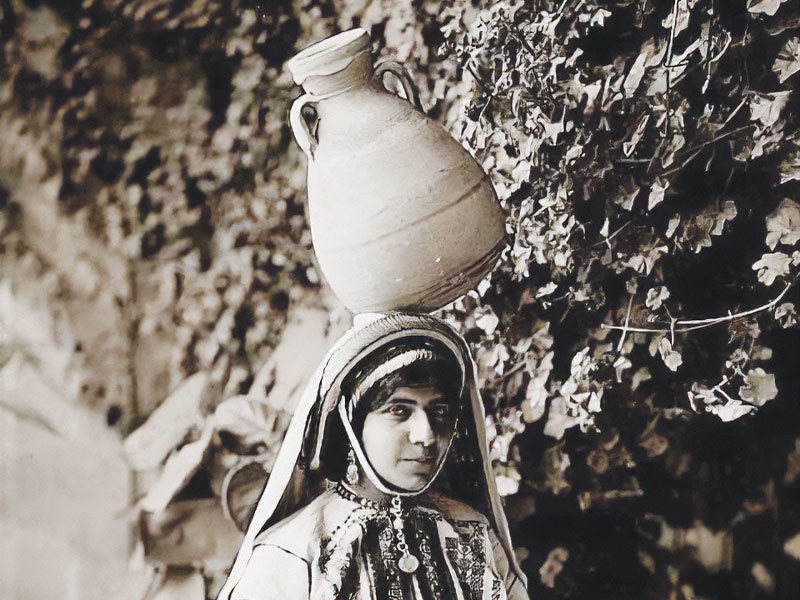Visual Art as a Means of Conserving Jerusalemite Identity
Issue 14

Iman Mahran (Egypt)
Visual art plays a major role in preserving heritage as a component of human visual memory. Visual art is related to people’s relationship to their surroundings and to their psychological and physical interaction with the environment.

Visual art acts as a mirror for the visual culture, a record in shapes and symbols, and is thus linked to the identity of the local culture.

Cultural identity is informed by common religious beliefs, language, knowledge that has been acquired over time, products, arts, heritage, values, traditions, customs, ethics, history, the collective conscious, norms of thought and behavior and other factors that distinguish nations and societies. These factors are mutable; they change over time and are both influential and influenced.
A large part of culture is common to all societies as a result of the interconnectedness between nations, but there are always local elements to culture that are closely tied to local beliefs, languages and national character.
The erosion of identity is a result of the disappearance of cultural parameters or the intentional eradication of unique cultural aspects; a distinct identity contributes to the concept of a nation.

The Arabs who live in Jerusalem have been subject to an organized erosion of their identity by the Israelis, who have worked hard to destroy the Arabs’ roots and historic presence in the city. The Israelis have sought to undermine Jerusalem’s Arab identity by demolishing homes, closing roads, suppressing people, limiting people’s movements and using other means of intimidation.
Jerusalem has always been a city of peace and faith for Jews, Christians and Muslims, and it is very important to preserve the city’s historical identity. The city has always reflected religious tolerance and peaceful co-existence. The arts show that Jerusalem is distinguished as a melting pot for the aforementioned religions.

The society’s development over the eras is reflected in Jerusalem’s traditional arts and in its architecture, sculpture, murals, pottery, weaving, woodwork, metalwork, jewelry, ornaments, glass products, stones and clothing.



































































